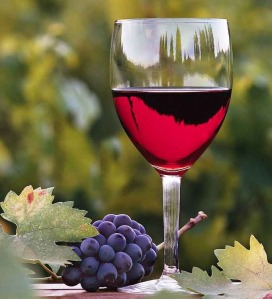7.5 winehiker points*
Every once in a while, we wine lovers find that promise does not deliver what expectation anticipates. You can read all the words that are written to describe a wine; most of us want to believe them enough to reach into our wallets if we are at all tantalized by the copywriter’s scribblings. But then you taste the wine, and you wonder if maybe you’ve had a head cold for a week.
Such was my experience with the 2001 Boundary, a Bordeaux blend from Te Awa Farms in the town of Hastings, Hawkes Bay, New Zealand.

The 2001 Te Awa Boundary from Hawkes Bay New Zealand. The copywriters quite obviously did not taste this wine.
A case in point on the copywriting, from The New Zealand House of Wine:
“A delicious wine with melting tannin and complex layers of flavour. Intertwined aromas of fresh leather, dark cherry, bramble and plum on the nose. A supple, round attack opens to show layers of flavour on the palate, which reflect those of the nose. The tannins are now well integrated giving the wine depth and length.”
From Bottlenotes, from whom I purchased the wine:
“A high quality, high value New World Bordeaux blend. Smooth and lush with aromas of cedar, sweet tobacco, blackberry and a bit of spice. On the palate, the wine is quite smooth with moderate tannin, a bit of leather and dark berry fruit flavors.”
My own tasting notes:
“Medium garnet-colored Bordeaux blend, strong earthiness on nose, but with mild elusive fruit aromas and slight fragrance of wood and spice. Moderate balance aspects, with slight tartness, agreeable bitterness. Medium body, good mouthfeel, but heavily lacking in fruit flavor; very short finish.”
Hmmm…. I was not attacked by supple round plums, especially on my nose. Which New World are we talking about here? Were my defenses too solidified? I thought I should clear my throat, blow my nose, and try again. So I did, three more times over the course of the evening. Up until I tried this particular wine from Bottlenotes, I had been pretty pleased with their selections. Fortunately with Bottlenotes you can share your tasting notes with them so they can further tailor their selections to your palate. In fact they actually ask you to do so.
And I’ve been doing that. Perhaps not enough, truth be told. I guess we still have some tailoring to do.
At any rate, I tried this wine again after 45 minutes in the decanter, then again after 2 hours of opening. Still, after four hours, the 2001 Boundary tasted way way way too [insert your own invective here] earthy. You know, being a winehiker and all, I’m a big fan of earth. I like it beneath my feet. A lot, in fact.
I just don’t like it in my mouth. At least not that [invective] much of it. I think I’ll stay on this side of the Boundary for a while.
Often I find that the earthiness aspects of some wines dissipate within a short time of opening or decanting. Perhaps my problem is that I didn’t try this wine with roast lamb, roast beef, game, or grilled duck, as suggested by the well-meaning folks at Bottlenotes. Heck, Te Awa Farms even has its own restaurant, which is considered to be one of New Zealand’s top six dining establishments. Says something about the NZ palate, perchance. They must quite naturally be pairing their foods with (or is that to?) their wines.
So, I suppose I’m remiss for not suckling on a duckling for this one. Nevertheless, good food does not make bad wine better.
So sayeth I.
OK, so that’s my first stellar review of a not-so-stellar wine. There are bound to be more.
—————-
$30.00 at bottlenotes.com; priced at $22 elsewhere online. That is, if you really want to buy it after reading this post.
Disclosure: I am a member of bottlenotes.com’s Limited Addictions club; this wine arrived in their summer shipment and was purchased by me.
*Rated on the 20-point Davis scale using my Wine Scoring Sheet.





